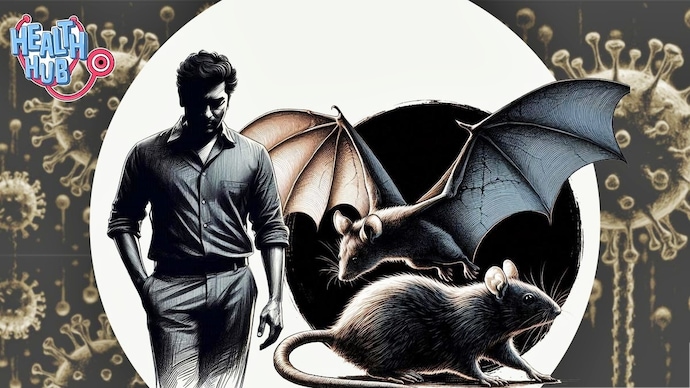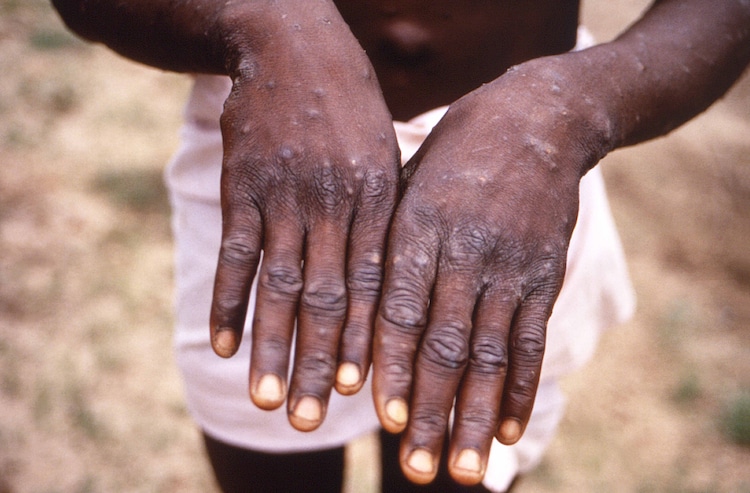Covid, ampox, bird flu: Why viruses are jumping from animals to humans
Scientists are increasingly concerned about zoonotic diseases in the post-Covid-19 era. Human activities and climate change are increasing the spread of these diseases.

In the post-COVID-19 era, scientists are on high alert for infections emerging from every corner of the world.
In 2021, when bird flu began killing millions of animals in Britain, the US, Australia, Antarctica and sub-Antarctic islands, several variants of H5N1 emerged, including the less virulent H9N2 found in West Bengal, India.
Meanwhile, Mpox, formerly known as Monkeypox, remained in the headlines in 2022 due to its global spread.
These viruses, which were first discovered in animals, have now successfully spread to humans and are causing new infections, the nature of which has scientists on alert.
What incident is this?
This phenomenon of transmission from animals to humans is called zoonosis and these diseases are called zoonotic diseases. These infections are caused by pathogens, which can be bacteria, viruses, fungi or parasites that spread from animals to humans through close contact.
The most common zoonoses have been Ebola and salmonellosis, which have seen frequent outbreaks.
Some diseases, such as HIV, that began as zoonoses later became human-only.
The latest to be identified are ampox, bird flu and SARS-CoV-2, which caused the COVID-19 pandemic. These diseases are rapidly becoming a public health concern, especially due to the increased contact between humans and animals.

Dr Varsha Sridhar, an infectious disease specialist and microbiologist, director and co-founder of Molecular Solutions Care Health, spoke about the causes and impacts of zoonotic diseases and how climate and public health preparedness can address them.
According to Dr. Sridhar, zoonotic diseases can originate from a variety of animal hosts, including bats, birds, and even mammals.
“In the last 20-25 years, we have seen that many serious infections in humans come from animals. The microbes may not cause significant harm to their natural animal hosts, but can cause serious outbreaks when they infect humans,” Dr Sridhar told IndiaToday.in.
One of the best-known zoonotic diseases is HIV (human immunodeficiency virus), which originated in monkeys and apes as a virus called SIV.
Although these animals carry the virus without causing any significant harm, the virus “jumped” to humans, possibly through activities such as consumption of wild animal meat, leading to the global HIV/AIDS epidemic.
Similarly, other zoonotic diseases, such as SARS and COVID-19, have also had devastating impacts on a global scale.
Why are zoonotic diseases on the rise?
Zoonotic diseases are nothing new. They have existed for centuries.
However, Dr. Sridhar said that human activities are rapidly increasing the spread of these diseases.
“Deforestation, industrialization and increased human contact with animals are creating more opportunities for germs to jump from animals to humans,” he said.

As human populations expand into animal habitats, the likelihood of exposure to potentially zoonotic microbes increases.
Role of climate and human influence
Climate change is another major factor contributing to the spread of zoonotic diseases.
Destruction of natural habitats, changes in weather patterns, and the extinction of some animal species all play a role in destabilizing the delicate balance between humans, animals, and the environment.
Dr Sridhar cited the example of the 1918 influenza outbreak, where unusual weather patterns disrupted bird migration, leading to the spread of the deadly H1N1 virus (swine flu).
Not all diseases transmitted by animals are considered zoonotic.
For example, although malaria and dengue are transmitted to humans via mosquitoes, they are classified as vector-borne diseases, not zoonotic ones.
Zoonotic diseases, on the other hand, must meet two criteria: they originate from animals, and once they infect humans, they can spread from person to person.
The virus responsible for COVID-19, SARS-CoV-2, is an example of a zoonotic disease that meets both criteria.
Dr. Varsha pointed to the broader issue of biodiversity loss and environmental degradation as major factors for the rise of zoonotic diseases.
“When we destroy ecosystems, we also reduce exposure to animals and insects that spread diseases,” he said. The impact of climate change on disease transmission reminds us how interconnected the health of humans, animals and the environment really is.
How can we stay safe?
While zoonotic diseases are a global issue, Dr. Sridhar emphasized that there are steps people can take to protect themselves.
“Practising good hygiene, such as washing your hands regularly and keeping your surroundings clean, is vital,” she said. While this advice may sound simple, she acknowledged it can be difficult for many people, particularly those who live in poverty or lack access to clean water and sanitation.

The microbiologist encouraged people to be mindful of their interactions with animals, especially in areas where zoonotic diseases are common.
He also highlighted the importance of healthy lifestyle including eating nutritious food and maintaining a clean environment to boost immunity and reduce the risk of infections.
The need for public health preparedness
On a larger scale, Dr. Sridhar emphasised the importance of public health systems in combating zoonotic diseases.
“Surveillance plays a vital role in identifying outbreaks early, but it is important to integrate data from different sources – human, animal and environmental,” he said.
The platform Dr Sridhar is associated with is called Precision Health, which enhances public health preparedness by collecting and analysing data from different sectors to predict and prevent future outbreaks.
Public health systems also need to become more responsive to local conditions. “We need a dual strategy that includes both bottom-up and top-down approaches. Local communities must be empowered to provide data, which can then inform targeted interventions at the grassroots level,” he said.
Zoonotic diseases are a growing threat to global health and require individual action as well as systemic change.
By improving sanitation, supporting environmental protection, and strengthening public health systems, we can reduce the risk of zoonotic outbreaks and create a safer world for future generations.





